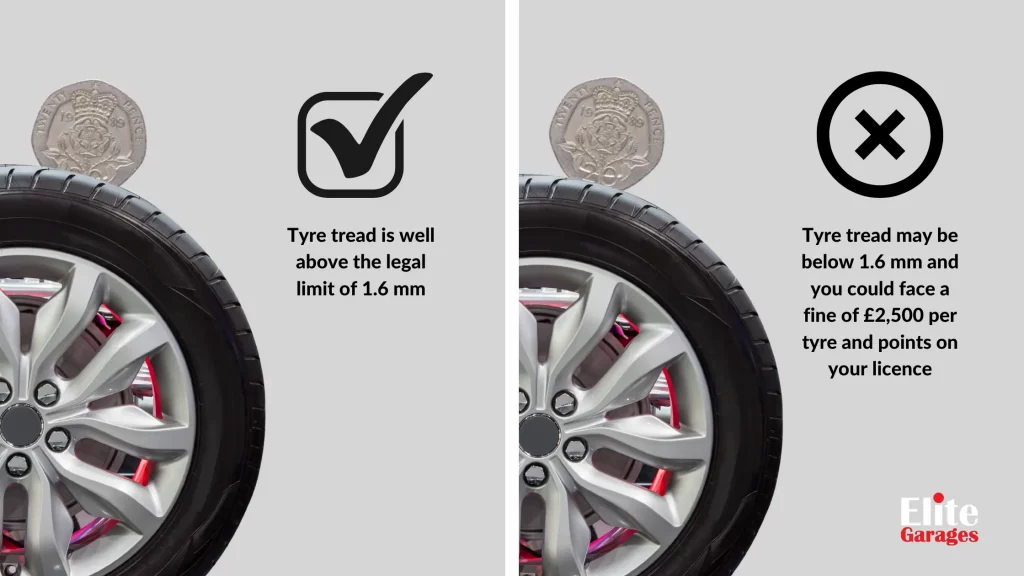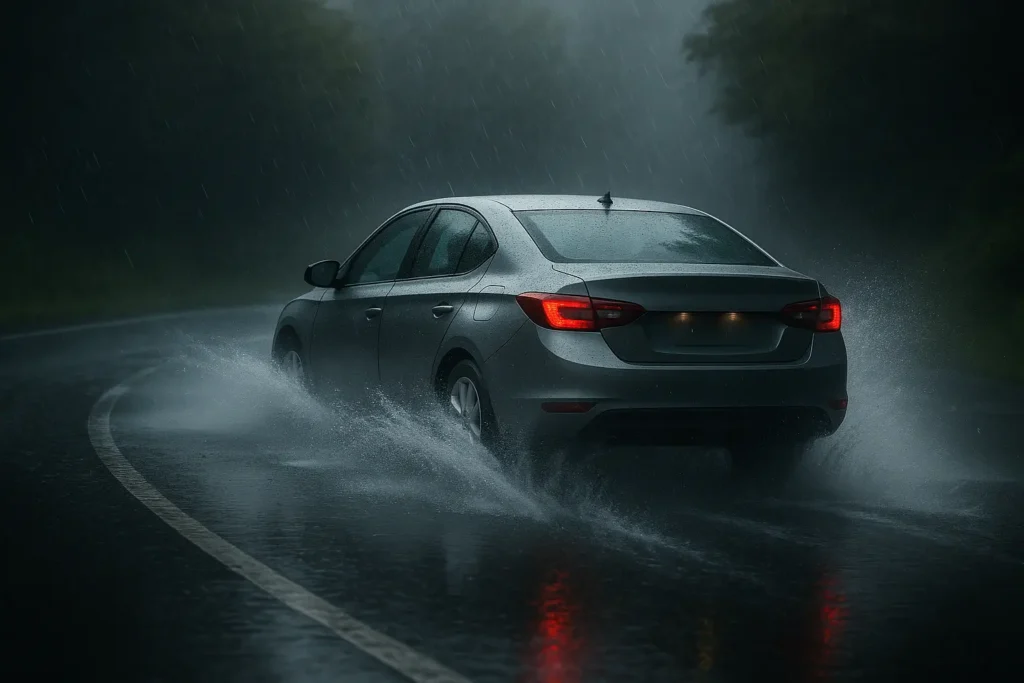
Don’t Leave Without Following These Tyre Safety Tips
Bank holidays in the UK are made for road trips—whether you’re visiting family, heading to the coast, or towing a caravan into the countryside. But while packing your bags might be top of mind, tyre safety often isn’t. The condition of your tyres can make or break your holiday journey. Blowouts, under-inflation, or uneven wear don’t just cause delays—they put everyone at risk.
This comprehensive guide explores everything you need to know about tyre safety and vehicle prep before hitting the road this bank holiday weekend. From tyre pressure and tread to towing and maintenance, here’s how to travel smart, stay safe, and avoid stress.
Why Tyre Safety Matters on Long Journeys
Your tyres are your car’s only contact with the road. They manage grip, braking, steering, and stability—especially at motorway speeds. During bank holiday weekends, roads are busier, travel times are longer, and cars are often fully loaded with passengers and gear.
Poor tyre condition dramatically increases your risk of accidents, longer stopping distances, and breakdowns. Following basic tyre safety tips dramatically reduces your risk of accidents, longer stopping distances, and breakdowns. If you haven’t already, make sure you book a free tyre safety check with Elite Garages!
1. Tyre Safety Checks and Tyre Pressure
Tyre pressure affects your vehicle’s fuel efficiency, handling, and braking. Too low, and your tyres can overheat or wear prematurely. Too high, and you reduce traction.
Check your pressure when tyres are cold, and always inflate to the vehicle manufacturer’s recommended levels—you’ll usually find this in the driver’s door frame or owner’s manual. Don’t forget to adjust the pressure if you’re towing or carrying heavy luggage.
Many UK car service centres, including Elite Garages, offer a free tyre pressure check for peace of mind. It’s one of the most basic yet essential tyre safety tips to follow before a long journey.
2. Tyre Safety Checks for Tread Depth
Your tread helps your tyres grip the road, especially in wet conditions. The legal minimum tread depth in the UK is 1.6mm across the central three-quarters of the tyre, but safety experts recommend at least 3mm for optimum performance.
Use a tread depth gauge, a 20p coin, or pop into your local Elite Garages branch for a free tyre check before your trip.
Worn tread contributes to longer stopping distances and a higher risk of aquaplaning—two things you definitely don’t want during a holiday drive. That’s why this remains one of the key tyre safety tips endorsed by professionals.
Recommended: How to Use the 20p Coin Test to Check Tyre Tread

3. Look for Damage or Irregular Wear
Bulges, cracks, and sidewall damage are warning signs. So are bald patches or uneven tread wear—which could indicate misaligned wheels, suspension issues, or the need for a wheel alignment service.
If you’re unsure what to look for, our trained technicians are happy to inspect your tyres free of charge. Catching a problem early is one of the smartest tyre safety tips you can apply this bank holiday.
4. Towing a Caravan or Trailer? Use These Tyre Safety Tips
Bank holidays are prime time for towing, whether it’s a small trailer, caravan, or even a boat. But towing changes the dynamics of your vehicle significantly, putting extra strain on your tyres, brakes, and suspension.
Before towing:
- Check the tyre pressure and tread depth on your trailer or caravan.
- Inspect all hitch points, indicators, and reflectors.
- Book a pre-trip brake and suspension check, especially if it’s been a while since your last tow.
Poorly maintained tyres on a trailer are just as dangerous as on a car. Please read this guide for tyre safety tips when travelling with a caravan.
5. Keep an Eye on Tyres During Your Trip
It’s easy to forget about tyre safety once you’re on the road. But long trips can affect pressure and wear. Check your tyres at fuel stops, especially if you’re driving for more than 2 hours at a stretch.
Stay alert to changes in handling, vibration, or unexpected pull—these could signal slow punctures or under-inflation. Most importantly, stop immediately if your tyre pressure warning light comes on.
6. Other Vehicle Safety Checks to Do Before You Go
Tyres are just one part of safe travel. Before setting off, we recommend the following:
- Top up fluids: Engine oil, brake fluid, screenwash, and coolant
- Check all lights and wipers for full visibility
- Test your brakes for responsiveness
- Schedule a diagnostic check if you’ve seen any warning lights recently
- Consider a quick MOT or interim car service if your vehicle is due soon
Book your free vehicle safety check with Elite Garages
Government-Backed Advice on Road Safety
For more travel safety guidance, the UK Government’s road safety hub includes official tips on staying safe on the road, particularly when carrying heavy loads or travelling long distances.
Is Driving on Worn Tyres Really That Dangerous?
Absolutely. Worn tyres are one of the most overlooked yet serious road hazards. The less tread you have, the more your vehicle’s grip deteriorates, especially in wet weather. As mentioned earlier in this guide on tyre safety tips, driving on worn tyres results in longer stopping distances, a higher risk of aquaplaning, and reduced control in emergency manoeuvres. And if your tread is below the legal limit, you’re not just at risk of an accident—you’re also breaking the law and risking a hefty fine and penalty points.
How Do I Handle Aquaplaning?
Aquaplaning, also known as hydroplaning, occurs when your tyres lose contact with the road surface due to a layer of water. In that moment, your vehicle effectively glides without grip, making steering or braking feel unresponsive. It can be a frightening experience, especially at speed.
The best way to handle aquaplaning is to stay calm and avoid sudden movements. Ease off the accelerator gently and keep the steering wheel straight. Do not brake harshly or jerk the wheel—this can cause a loss of control. Allow the car to slow naturally until the tyres regain contact with the road.
Prevention is even better than cure. Keeping your tyres properly inflated and ensuring they have a healthy tread depth (ideally 3mm or more) are among the most effective tyre safety tips for reducing the risk of aquaplaning, particularly during heavy rain or on worn road surfaces.
Final Thoughts on Tyre Safety Tips
Don’t let a tyre ruin your holiday!
Remember, tyres carry the weight of your car, your passengers, and your plans. Whether you’re towing a caravan or just loading up for the coast, checking your tyres can mean the difference between a stress-free bank holiday and a roadside disaster.
The good news? You don’t have to do it alone. Elite Garages offers free tyre safety checks, wheel alignment, and vehicle diagnostics to help you travel confidently.
Book your check today and enjoy your long weekend knowing your vehicle is in top shape.
FAQs
Click the + to read any answer or visit our most FAQ page to review the most frequently asked questions across all our Elite Locations.
If you click on a ‘Category’ or ‘Tag’ link, the page will ‘refresh’ and reload the page showing the top of the page first, you’ll then just need to scroll down to the FAQ section to see the results for the Category or Tag you selected.
We can fit OE (Original Equipment) for customers and we’re always happy to discuss parts and brands.
Clutch judder is mostly caused by components and the flywheel not meeting properly. This often happens once your vehicle has come to a complete stop and then engaging the clutch during take-off. It could mean your clutch linkage may be worn or damaged.
The issue could be the clutch pressure plate or the clutch disc. However, other causes for clutch slipping is often found in the release system, an incorrectly reworked flywheel or the fitment of the wrong clutch. Our experts will be able to determine the cause and suggest a solution.
About Us
Opening Times
Saturday : 8:30–4:00
Sunday : closed
More Information
Contact UsCustomer Information Pack
Check MOT Due Date
Free MOT reminder
Careers
Legal Information
Recent Posts
- How Regular Car Maintenance Helped A Corolla Reach One Million Miles
- Elite Garages Dorchester Arrives: Expert Car Services on Your Doorstep
- Summer Bank Holiday Car Safety: Get Road Trip Ready with Elite Garages
- Are Budget Tyres Worth It? What Every Driver Should Know
- The Best Type of Car Service for Your Vehicle



